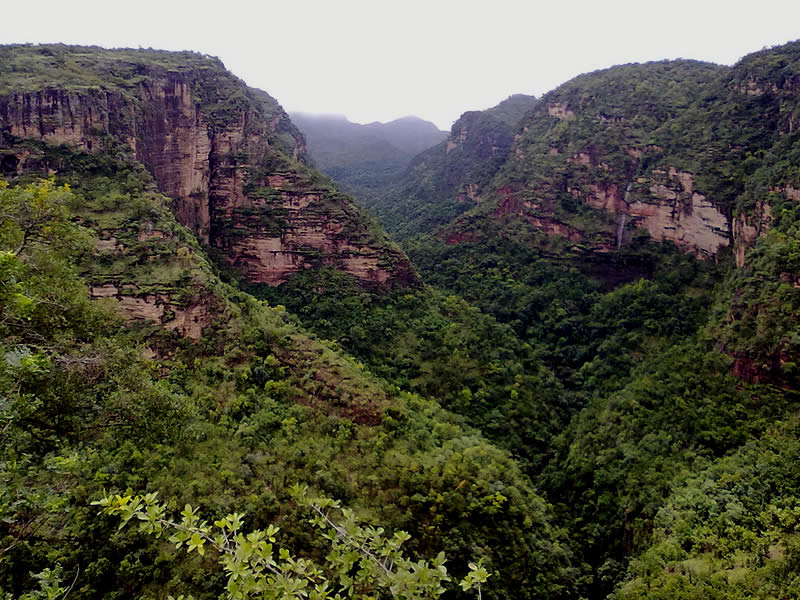Pachmarhi Travel and Tourism Guide
Pachmarhi was discovered by Captain Forsyth in 1857. The name Pachmarhi is believed to be derived from the Hindi words ‘Panch’ or five and ‘Marhi’ meaning caves. The caves are situated on a hilltop and provide an excellent vantage point. Pachmarhi was the capital of the Gond Tribe. In 1857 Captain James Forsyth of the British Army discovered Pachmarhi and many modern developments in Pachmarhi owe to this man.
Being the highest point in central India, the British made it one of its key army cantonment. It quickly developed into a hill station and served as a sanatorium for British troops. Pachmarhi was the summer capital for the Central Provinces.
The modern history of Pachmarhi does not go far behind. In 1862 Capt. Forsyth reported about the Sylvan charms of the place to the Chief-Commissioner of Hoshangabad. He was so much impressed that the Capt. was asked to go to Pachmarhi again to examine the possibility of using the plateau for establishing a sanitorium.
On receiving the positive report a sanitorium was built which is now turned into family quarters for Military personnel. However the first building that was constructed was named Bison Lodge which is now a centre of attraction for tourists as it is a museum called 'VANIKI SANGRAHALAYA]. In 1870 a Military centre was established and after seven years a local body Government-the Cantonment board began functioning.
Pachmarhi was too precious to the British. They did not permit general public to see it. Even the mates and coolies who were employed for construction work at Pachmarhi, were instructed to keep their colony on the foothills presently called Matkuli. The English did not want the town to grow into a city of affluence destroying the calm and repose so the rules were framed in such a way that construction of big houses or two storey buildings, higher than the prescribed limit was not possible.
Even the Nawab of Bhopal who used to come here frequently to play POLO was not permitted to construct a palace in the area of the Cantonment and he could get the palace built on the outskirts of the township. The palace was later purchased by the rulers of Narsinghgarh.







